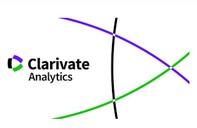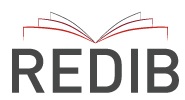<I>I HAVE FOUR LEFT AND DON’T KNOW WHAT TO DO WITH THEM</I>. A STUDY ON DIVISION WITH REMAINDER PROBLEMS IN 1ST OF ESO PUPILS
Abstract
Division-With-Remainder problems are particularly complex as suggested in many works. The aim of the present research was to establish whether students’ difficulties in these problems came from an inadequate initial representation or from an inadequate final interpretation of the numerical answers. We also wanted to determine whether types of remain-ders could be grouped into two blocks depending on whether the answer was directly matched to one of the terms of the division or not. To this end, we tested forty-nine secondary students with a mean age of 12 years and 10 months. The participants solved Partitive and Quotitive Equal-Groups problems involving four Types of Remainder: Remainder-Not-Divisible, Remainder-Divisible, Remainder-as-the-Result, and Readjusted-Quotient-by-Partial-Increments. Our data showed that: (a) although the selection of division as the resolution procedure was very high in both Models of Division, Partitive problems were easier than Quotitive ones; (b) the percentage of correct interpretations was higher than the percentages reported in other researches; and (c) success in problems whose answers were the quotient or the remainder was higher than in Readjusted-Quotient-by-Partial-Increments problems. To conclude, the main difficulty of students when solving Division-With-Remainder problems seems to be in the inadequate initial representation of the problem.Downloads
The works published in this journal are subject to the following terms:
1. The Publications Service of the University of Murcia (the publisher) retains the property rights (copyright) of published works, and encourages and enables the reuse of the same under the license specified in paragraph 2.
© Servicio de Publicaciones, Universidad de Murcia, 2022
2. The works are published in the online edition of the journal under CC BY-SA 4.0 license, a Creative Commons Reconocimiento-CompartirIgual 4.0 (legal text). You are free to:
- Share: copy and redistribute the material in any medium or format for any purpose, even commercially.
- Adapt: remix, transform, and build upon the material for any purpose, even commercially.
The licensor cannot revoke these freedoms as long as you follow the license terms, under the following terms:
- Attribution: You must give appropriate credit , provide a link to the license, and indicate if changes were made . You may do so in any reasonable manner, but not in any way that suggests the licensor endorses you or your use.
- ShareAlike: If you remix, transform, or build upon the material, you must distribute your contributions under the same license as the original.
No additional restrictions: You may not apply legal terms or technological measures that legally restrict others from doing anything the license permits.
This work is licensed under a Creative Commons Attribution-ShareAlike 4.0 International License.
3. Conditions of self-archiving. Is allowed and encouraged the authors to disseminate electronically pre-print versions (version before being evaluated and sent to the journal) and / or post-print (version reviewed and accepted for publication) of their works before publication, as it encourages its earliest circulation and diffusion and thus a possible increase in its citation and scope between the academic community. RoMEO Color: Green.















